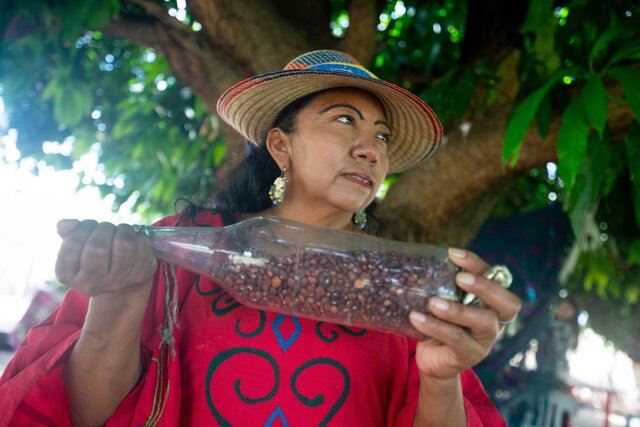October 2024

''We are grateful to have all this food available now. Before, we had to wait for rain to be able to sow or just to drink some water. Now we have a well and food all year long,'' explains Ana Griselda Gonzalez, from the Ipasharraim Indigenous Wayuu community. - Credit: FAO / Felipe Rodriguez
The Wayuu Indigenous Peoples of Colombia, facing the challenges of a harsh climate in their arid homeland of La Guajira—a land of scarce water resources and scorching temperatures—have a long-standing ally: the remarkable Guajiro bean.
This drought-and flood-resistant bean, cultivated for centuries, has been a cornerstone of their survival, providing sustenance even in the most challenging conditions. Passed down through generations like a cherished heirloom, the Guajiro bean represents a profound connection to their ancestors and a symbol of resilience in the face of adversity.
The bean is not only tough but also versatile. It can be eaten at any stage of its growth, offering a steady supply of food even when rains are scarce. Its high protein, mineral, and fibre content makes it a nutritious staple in any diet.
However, the Wayuu's traditional farming practices are now being challenged by the intensifying effects of climate change. With the support from the FAO- United Nations Development Programme (UNDP), Scaling Up Climate Ambition on Land Use and Agriculture through Nationally Determined Contributions and National Adaptation Plans (SCALA) programme, funded by Germany’s Ministry for the Environment, they are merging ancestral knowledge with innovative climate adaptive techniques and embracing agrobiodiversity by cultivating a wider range of crops.
They're revitalizing their lands, ensuring the Guajiro bean continues to thrive alongside other vital crops, providing for their community and offering a beacon of hope in the face of a changing climate.
Complete article: